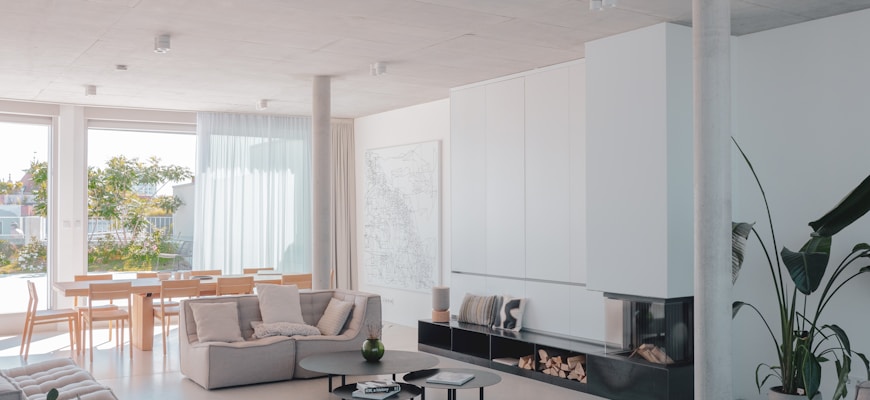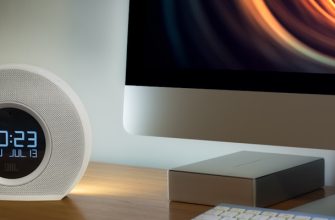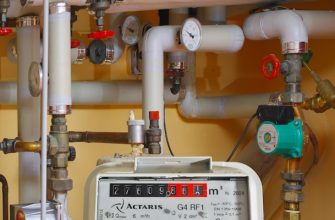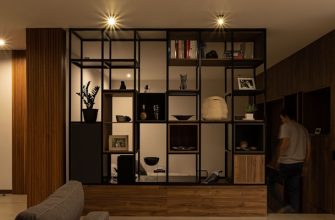The Role of Smart Homes in Air Management
Smart homes play a crucial role in enhancing air management, providing residents with a comfortable and healthy living environment. By integrating advanced technology, smart homes facilitate efficient air quality control, ensuring that indoor air remains clean and fresh.
- Automated Ventilation: Smart homes utilize automated ventilation systems that adjust airflow based on real-time air quality readings. This technology helps in maintaining optimal air circulation while minimizing energy consumption.
- Air Quality Monitoring: Equipped with sensors, smart homes continuously monitor indoor air quality. These sensors detect pollutants, humidity levels, and temperature, allowing for timely adjustments to enhance air management.
- Integration with HVAC Systems: The integration of smart devices with existing heating, ventilation, and air conditioning (HVAC) systems optimizes energy use and improves overall air management. Smart thermostats and vents can be programmed to respond to specific air quality conditions.
- Remote Control: Homeowners can manage air quality remotely through mobile applications, enabling them to make adjustments from anywhere. This feature enhances convenience and ensures that the air remains fresh at all times.
- Smart Air Purifiers: Many smart homes include advanced air purification systems that filter out allergens and harmful particles. These devices work in conjunction with smart home systems to provide comprehensive air management solutions.
By leveraging smart technology, homes can achieve a higher standard of air management. This not only contributes to a healthier living environment but also promotes energy efficiency and sustainability. The role of smart homes in air management is becoming increasingly significant as more individuals seek to improve their indoor air quality.
How Intelligent Air Control Enhances Indoor Comfort
Intelligent air control systems are revolutionizing indoor comfort by offering precise and adaptable solutions for air quality management. These advanced technologies facilitate enhanced climate control, allowing users to maintain optimal temperature and humidity levels throughout their living spaces.
- Real-time Monitoring: Intelligent air control systems continuously monitor indoor air quality parameters, including temperature, humidity, and pollutants. This data-driven approach ensures a healthier living environment.
- Personalized Settings: Users can customize air control preferences based on their unique comfort needs. Smart home integration allows for automatic adjustments according to user habits and preferences.
- Energy Efficiency: By optimizing air circulation and temperature settings, intelligent air control reduces energy consumption significantly. This not only lowers utility bills but also contributes to environmental sustainability.
- Remote Accessibility: With smart home technology, users can manage air control settings from anywhere via mobile applications. This feature enhances convenience and ensures comfort even when away from home.
- Enhanced Air Quality: Intelligent air control systems can integrate with air purifiers and ventilation systems to provide cleaner and fresher air, reducing allergens and improving overall indoor air quality.
Incorporating intelligent air control into a smart home setup not only enhances comfort but also promotes a healthier lifestyle. As technology continues to evolve, these systems will play an increasingly vital role in creating more comfortable and efficient living environments.
Smart Technologies for Efficient Air Quality Monitoring
Modern smart technologies are revolutionizing the way air quality is monitored and managed within smart homes. With the integration of advanced sensors and automation systems, homeowners can achieve optimal air quality effortlessly. These technologies not only enhance comfort but also contribute to better health and well-being.
- Real-time Monitoring: Smart air quality monitors continuously track pollutants such as dust, allergens, and volatile organic compounds (VOCs). This data is crucial for maintaining a healthy living environment.
- Automated Adjustments: Based on the data collected, smart home systems can automatically adjust ventilation and air purification devices to ensure optimal air quality levels are maintained.
- Remote Access: Homeowners can monitor air quality remotely via smartphone applications, allowing them to make adjustments even when they are not at home.
- Integration with HVAC Systems: Smart technologies can seamlessly integrate with heating, ventilation, and air conditioning (HVAC) systems, enabling efficient air management tailored to specific needs.
- Alerts and Notifications: Users receive immediate alerts when air quality drops below acceptable levels, prompting timely action to improve conditions.
The implementation of smart technologies for air quality monitoring significantly reduces the risk of health issues associated with poor air quality. By leveraging advanced systems, homeowners can create a healthier indoor environment while enhancing energy efficiency. The proactive approach offered by these technologies leads to a sustainable and comfortable living space.
In summary, smart air quality monitoring systems play a vital role in intensive air management within smart homes. By employing real-time monitoring, automated systems, and remote access capabilities, homeowners can ensure a clean and healthy atmosphere. The integration of these innovative solutions not only improves air quality but also promotes a more enjoyable living experience.
Automated Airflow Management: Benefits and Features
Интенсивное управление воздухом в умном доме предлагает множество преимуществ, которые делают его незаменимым элементом для современных пользователей. Автоматизированное управление потоками воздуха обеспечивает оптимальную циркуляцию, что улучшает качество воздуха и создает комфортные условия для проживания.
- Энергоэффективность: Современные системы управления воздухом автоматически настраивают работу вентиляции и кондиционирования, что позволяет сократить расходы на электроэнергию.
- Улучшение качества воздуха: Системы интенсивного управления воздухом могут автоматически отслеживать уровень загрязнения, влажности и температуры, обеспечивая чистоту и свежесть воздуха в помещениях.
- Комфорт: Автоматическое регулирование потоков воздуха создает идеальные климатические условия, адаптируясь к предпочтениям пользователей, что способствует улучшению общего самочувствия.
- Удобство: Возможность удаленного управления через мобильные приложения позволяет пользователям контролировать систему из любого места, что обеспечивает дополнительное удобство и гибкость.
- Интеграция с другими системами: Интенсивное управление воздухом может быть интегрировано с другими элементами умного дома, такими как освещение и безопасность, обеспечивая комплексный подход к автоматизации.
Таким образом, автоматизированное управление потоками воздуха в рамках интенсивного управления воздухом является ключевым аспектом современного умного дома, который не только улучшает качество воздуха, но и создает комфортные условия для жизни. Эти функции делают управление воздухом более эффективным и удобным, что повышает общую привлекательность систем умного дома для пользователей.
Energy Efficiency and Air Management in Smart Homes
Energy efficiency and air management are vital components in the realm of smart homes. The integration of advanced technology in home systems allows for a seamless balance between comfort and sustainability. By utilizing smart sensors and automation, energy consumption can be significantly reduced while maintaining optimal indoor air quality.
Modern smart homes employ various techniques to enhance energy efficiency. One key approach is the use of intelligent ventilation systems that adjust airflow based on real-time data. This not only ensures fresh air circulation but also minimizes energy waste. Homeowners can benefit from lower utility bills and a reduced carbon footprint.
- Automated temperature control that adapts to occupancy patterns helps in conserving energy.
- Smart thermostats can monitor and adjust heating and cooling, optimizing energy use.
- Air quality sensors detect pollutants and allergens, activating ventilation when necessary.
- Integration with renewable energy sources, such as solar panels, enhances overall efficiency.
In addition to energy savings, air management systems in smart homes contribute to health and well-being. By ensuring a steady flow of clean air, these systems help reduce indoor pollutants and allergens, creating a healthier living environment. The combination of energy efficiency and effective air management is essential for a sustainable future.
Moreover, the data collected from smart home devices allows for continuous monitoring and improvement of energy use and air quality. Homeowners can receive insights and suggestions for optimizing their systems, further enhancing both comfort and efficiency. As technology evolves, the integration of energy management and air quality control will become even more sophisticated, paving the way for smarter, more efficient homes.
Future Trends in Home Air Control Technologies
The realm of home air control technologies is rapidly evolving, with innovative solutions emerging to enhance indoor air quality and comfort. Future trends in air management systems focus on integration, automation, and sustainability, making smart homes more efficient and user-friendly.
- Enhanced Sensor Technology: Future air control systems will utilize advanced sensors that detect air quality, humidity, and temperature changes in real-time. These sensors will provide homeowners with precise data, allowing for proactive adjustments to maintain optimal conditions.
- AI Integration: Artificial intelligence will play a crucial role in managing air systems. Smart algorithms will analyze data from various sensors to optimize ventilation and filtration processes, ensuring a consistently healthy living environment.
- Smart Ventilation Systems: The next generation of ventilation technology will focus on automated systems that adapt to external weather conditions. Smart vents will open and close based on real-time environmental data, improving energy efficiency and indoor comfort.
- Remote Monitoring and Control: Future air control technologies will offer homeowners the ability to monitor and adjust air quality remotely via mobile applications. This convenience will empower users to optimize their indoor environments from anywhere.
- Sustainable Solutions: As environmental awareness grows, the demand for energy-efficient air control systems will rise. Future technologies will prioritize sustainability, utilizing renewable energy sources and eco-friendly materials in their design and operation.
In summary, the future of air control technologies in smart homes promises significant advancements. Enhanced sensor capabilities, AI integration, smart ventilation systems, remote access, and sustainable features will collectively transform indoor environments, making them healthier and more efficient. Embracing these trends will ensure that homes remain not only comfortable but also aligned with the growing emphasis on sustainability and technology integration.








